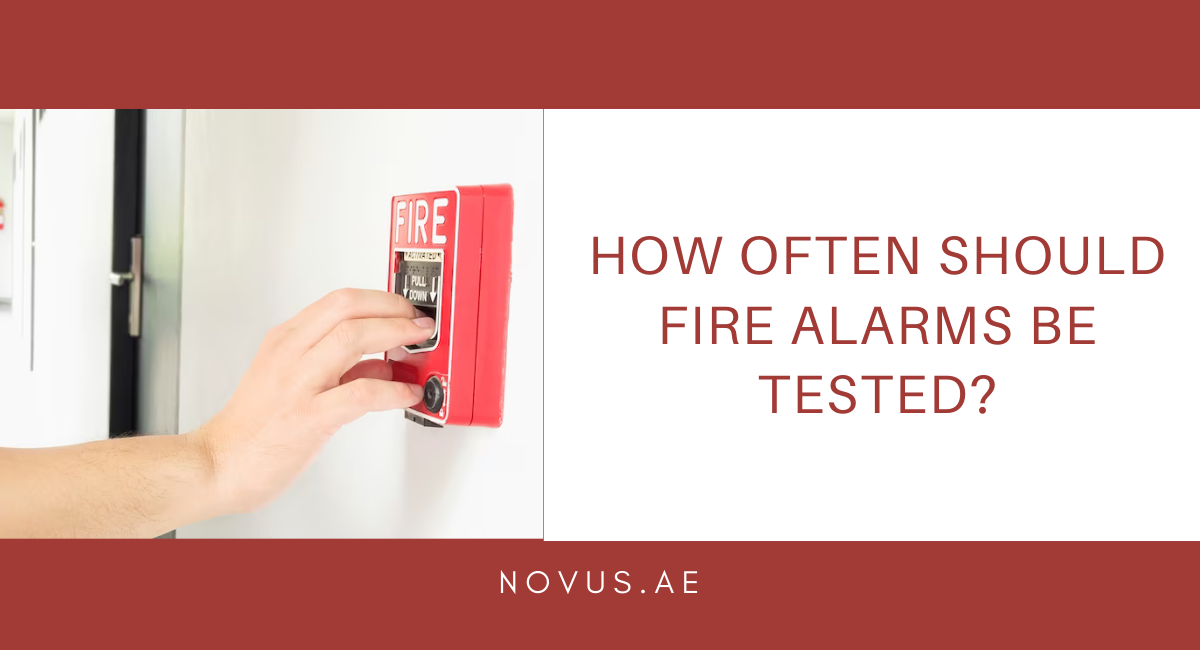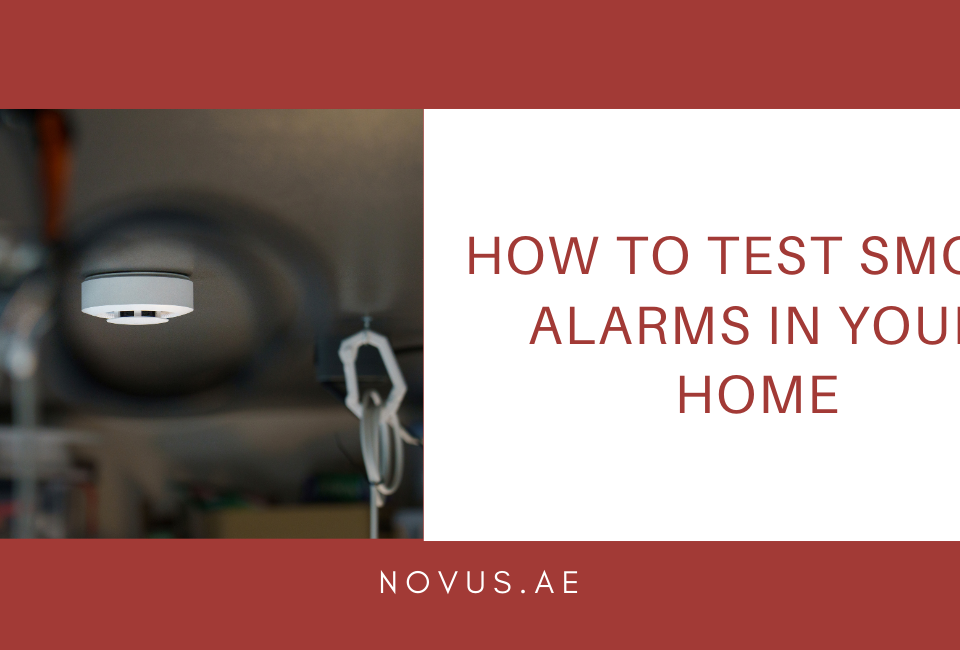- Welcome to Novus Fire and Security LLC
- +971 4 250 43 43
- +971 55 225 4256
- novusuae@eim.ae
How Often Should Fire Alarms Be Tested?

5 Approved Methods for Testing Smoke Detectors
March 13, 2024
How to Test Smoke Alarms in Your Home
March 18, 2024Fire alarms are an important part of building security. They form the first line of defense against fire. Thus regular fire alarm testing and inspection are essential to keep their effectiveness. This guide introduces why they need to be tested, how often, and with what instructions.
Necessity of testing fire alarms
Early Detection Saves Lives
Fire alarms are set to go off if even the smallest amount of smoke or an abnormally high temperature is detected, leaving plenty of time for occupants to escape safely. System testing can help reduce the risk of a system malfunction in an emergency. Therefore, testing is necessary lest you fail at the moment of truth.
Code Compliance
It is necessary to observe building codes and safety regulations. In various jurisdictions, particular safety standards require routine testing and maintenance of fire alarm systems. As well as making sure people are safe, following the guidelines also ensures that there are no legal consequences.
Preventing False Alarms
This way, problems that result in false alarms are identified and solved. This forward-looking approach helps avoid disturbances and slows unnecessary alarm and confusion. It also makes sure that fire alarm systems keep running.
Recommended Frequency for Testing
Whether and how to test fire alarms depends on the kind of system and local regulations. However, general guidelines can be followed to establish a comprehensive testing schedule:
Monthly Testing:
Check the entire fire alarm system every month for basic functionality. Alarms, sirens, strobe lights, and other audible or visible signals are some examples. The aim is to ensure that all the devices are in effective operation and to give out a strong and clear alarm sound.
Semi-Annual Testing
A more thorough examination is required every half year. So clean out dust and debris from all parts, and check the power supply, and batteries. In this test, smoke or heat is used to simulate attacks on detecting sensors.
Annual Professional Inspection
Inspect annually by using an experienced fire safety pro. Each component needs to be thoroughly checked, the standby power sources tested and it all ascertained that everything is in working order.
Proper Fire Alarm Testing Techniques
Notify Occupants
Give building occupants advance notice before fire alarm testing to prevent panic and confusion.
Check Power Sources
Confirm power connections and test backup batteries (if they exist) for the alarm system.
Test Audible and Visual Signals
Manual activation of the fire alarm can test audible signals like sirens and bells, and visual signals such as strobe lights.
Test Detection Devices
To test the alarm system, smoke or heat can be similarly simulated near detectors using Fire Alarm Testing equipment.
Verify Communication with the Monitoring Center
If a smoke alarm system is networked to a central monitoring center, it must have well-developed communications capabilities.
Inspect and Clean Components
Clean and check all parts periodically. Dust or other debris can be collected, preventing the system from working and making it ineffective.
Conclusion
Fire alarm testing is an important part of the building security system, contributing to the safety and happiness of occupants. Proper testing frequencies and full testing coverage assure building owners and facility managers that fire alarm systems will work. A fire alarm kept in working order provides you with an insurance policy in case of emergency and gives peace of mind on all levels.





